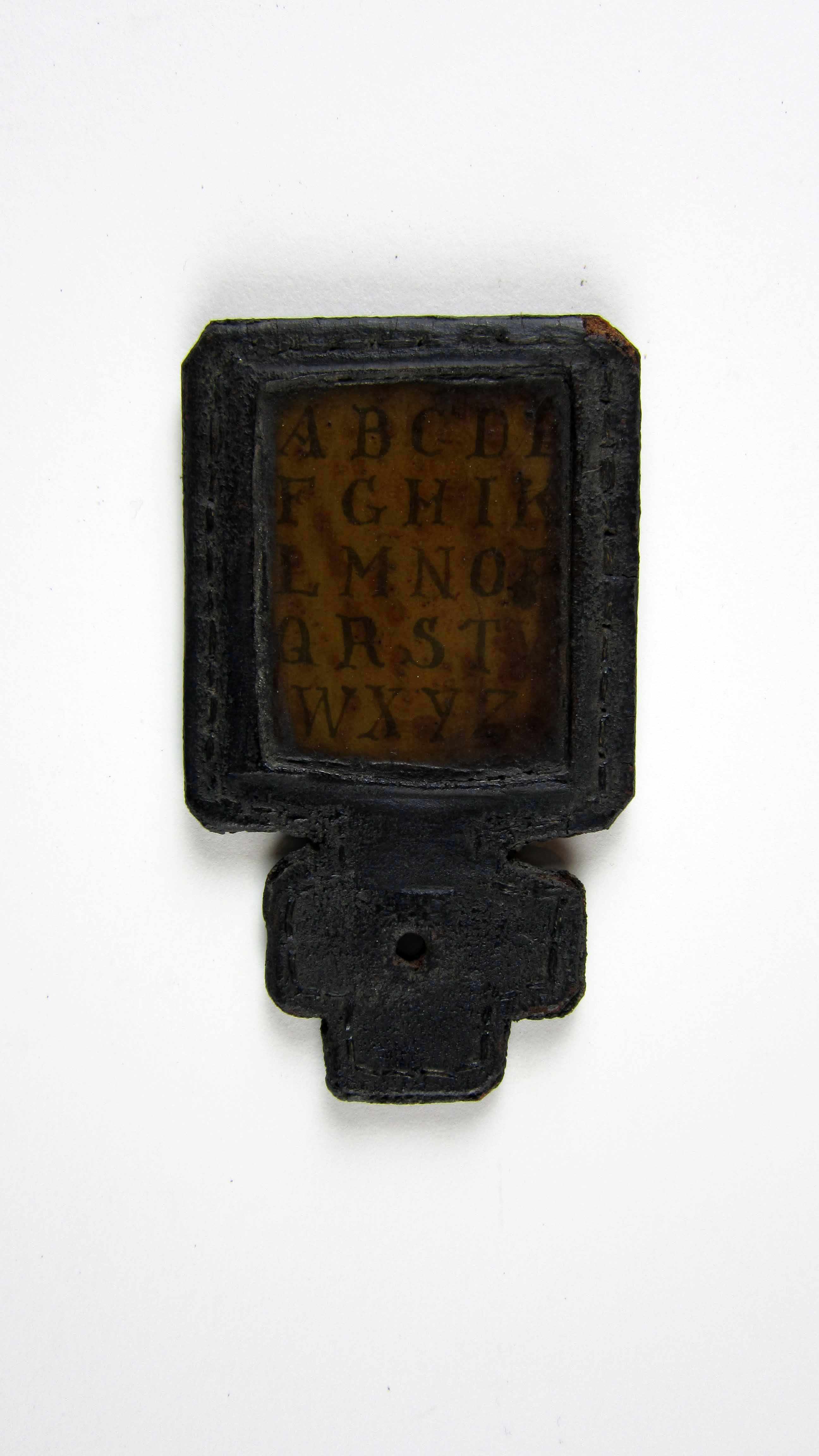

Alphabet books offer a vivid insight into the history of literacy and culture, as well as concepts of childhood. The Children's Book Collection at UCLA contains a rich array of these materials, some well-worn and much-used, some still bright and fresh. Each is a gem of print production and graphical imagery from another time and place. Though the history of alphabet books continues to the present, this exhibit focuses on the works in our collections published between 1700 and 1900, including horn books, primers, works of didacticism and seriousness, whimsy and play.
2. A Jumble ABC
3. A Little Pretty Pocket-Book
4. A New Lottery Book of Birds And Beasts
5. A Pretty Play-Thing for Children of All Denominations
8. ABC of Objects for Home And School
10. ABC with Pictures & Verses
12. Alphabet Et Instruction Pour Les Enfans
16. Dolly's ABC Book
17. Flora's ABC
18. Home ABC
22. Hornbook C. 1700
23. Large Letters for the Little Ones
24. Little ABC Book
25. Little People: An Alphabet
26. Martin's Nursery Battledoor
27. Mother Goose ABC
28. My Darling's ABC
29. Orbis Sensualium Pictus Quadrilinguis
30. People of All Nations: A Useful Toy for Girl Or Boy
31. Picture Alphabet
32. Pretty ABC
33. Railway ABC
34. Rusher's Reading Made Most Easy
38. The Alphabet of Old Friends
40. The Amusing Alphabet for Young Children Beginning To Read
42. The Child's Christian Education
45. The Easter Gift
47. The Favorite Alphabet for the Nursery
49. The Franklin Alphabet And Primer
51. The Golden ABC
55. The Moral And Entertaining Alphabet
57. The Old Testament Alphabet
59. The Picture Alphabet for Little Children
62. The Sunday ABC
63. The Union ABC
64. The Young Child's ABC, Or, First Book
65. Tom Thumb's Alphabet: Picture Baby-Books
67. Warne's Alphabet And Word Book: with Coloured Pictures
68. Wood's Royal Nursery Alphabet
Title Hornbook C. 1800C

Brief description 24 upper case letters of the alphabet; J and U omitted.
Full description More a relic of another era than a classic early childhood text, the hornbook is one of the first forms of the "alphabet book." In this early American example the handwritten alphabet is covered in a thin layer of horn and hand stitched into a leather case. Hornbooks were worn on the person daily as an intimate way for a child to learn the alphabet and begin the process of literacy.
Literacy Made to serve as a tool for learning the alphabet, this hornbook's sole purpose, it contained nothing more than the 24 letters (excluding J and U) and was to aid in the process of literacy. Having a portable, pocket-like quality, the hornbook could be called upon at all times--in school, on the street, or at home--as a device to be referenced in the reading or spelling process.
Childhood The child owner of this hornbook could have acquired it has a hand-me-down from an older sibling. Probably purchased by a local townsperson or even made by the parents of the child themselves, the hornbook would have served as the child's first exposure to the alphabet. The child in possession of this hornbook was most likely educated in a small one-room schoolhouse with his siblings and other children in the community. Leading a stark life with emphasis on learning religion and hard work, the child was expected to be obedient to his elders. Worn as a part of the daily wardrobe and studied intimately, this hornbook was likely a prized personal possession.
Iconography Though small and simple, the cultural iconography represented in this hornbook's cross shape handle evokes the presence of religion in the life of the early Colonial American child. Enduring up to the harshness of the everyday, the hornbook is durable and somber. Unlike many of the earlier European hornbooks inlaid with silver and gold, there is nothing frivolous about this hornbook. Its purpose was utilitarian--to teach the alphabet to the owner. Perhaps the hornbook would then be handed down to the next child in the family or community circle and aid in the same mission.
Production Small, compact, composed of hand stitched leather, paper and horn, this easily hand-held hornbook is handmade and one of a kind. Pierced with a hole so it can be hung around a cord, the hornbooks were often worn on a child's belt or satchel. The letters on this hornbook are hand drawn capital serif letters, as opposed to printed text, showing the time spent in making this unique item.
Publisher Unknown
Date 1800
UCLA Call Number CBC PE1118 .H67 1800
Repository UCLA Charles E. Young Research Library, Dept. of Special Collections
Dimensions 11 x 5 cm
Technologies of production Handmade
Caption